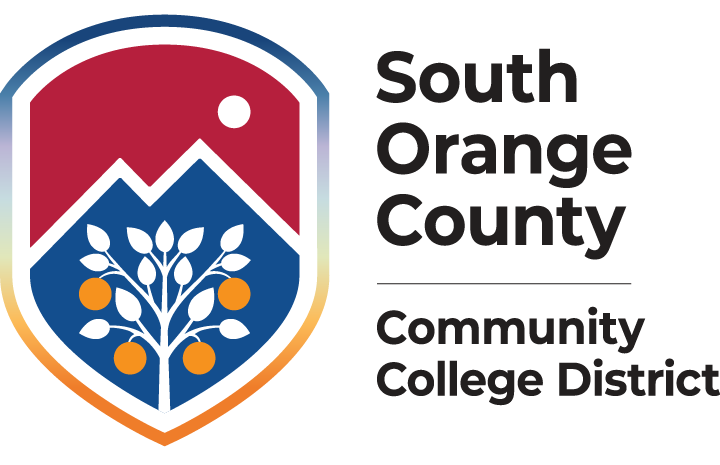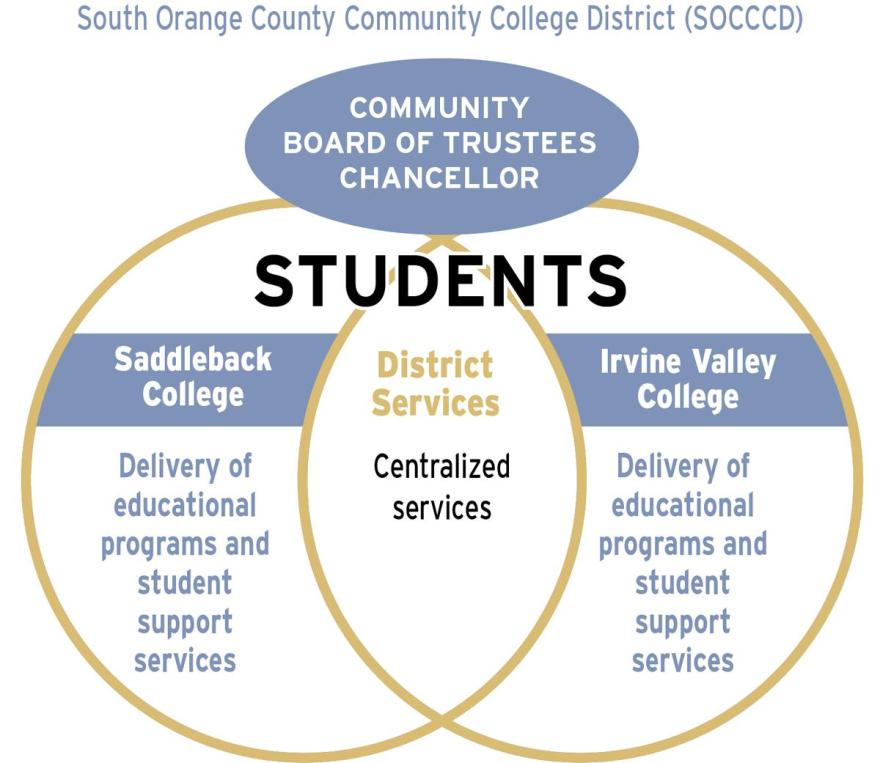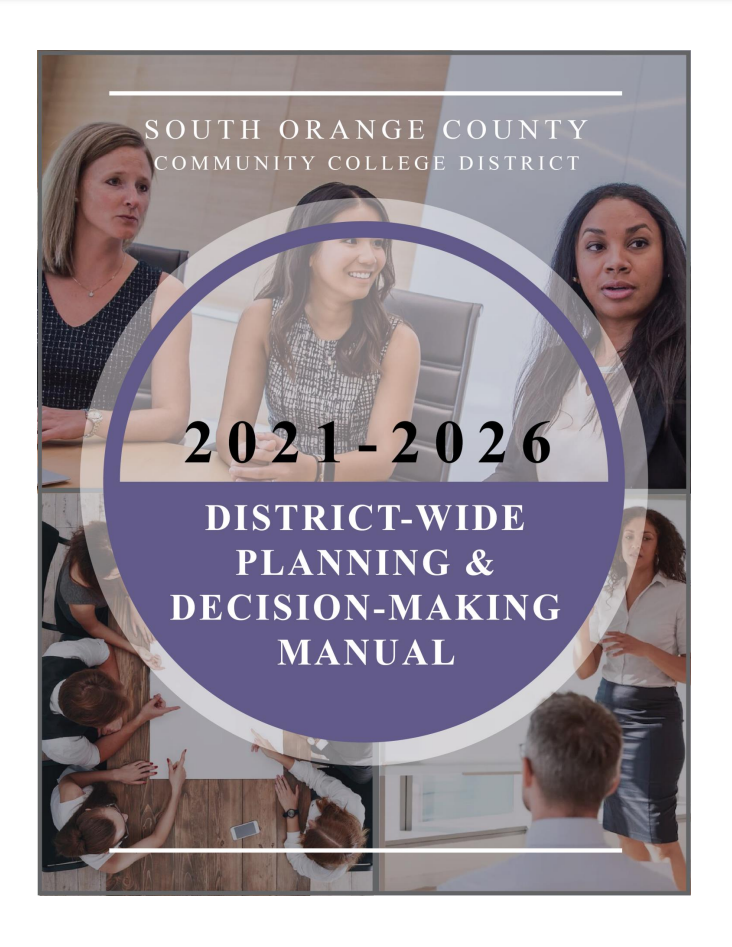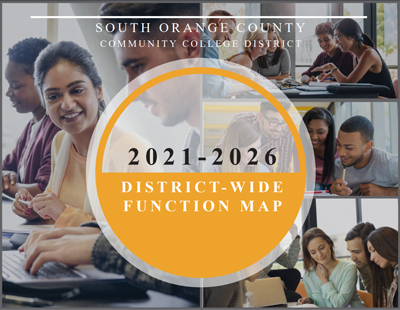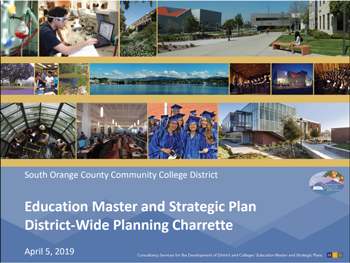The South Orange County Community College District's mission statement is "We provide a dynamic and innovative learning environment for diverse learners of all ages, backgrounds, and abilities. We promote access, success, and equity to meet each student's goals of skills development, certificate, associate degree, transfer, or personal enrichment. We contribute to the economic vitality of the region." Fulfilling this mission depends on strategic planning and effective decision-making. Long-term and short-term planning coupled with effective decision-making is essential strategies to fulfill this mission. Effective planning and decision-making require a partnership of board members, faculty, staff, administrators, and students united by a collective, shared vision that student success is the most important endeavor.
Decision-Making Philosophy - Dialogue and Consensus
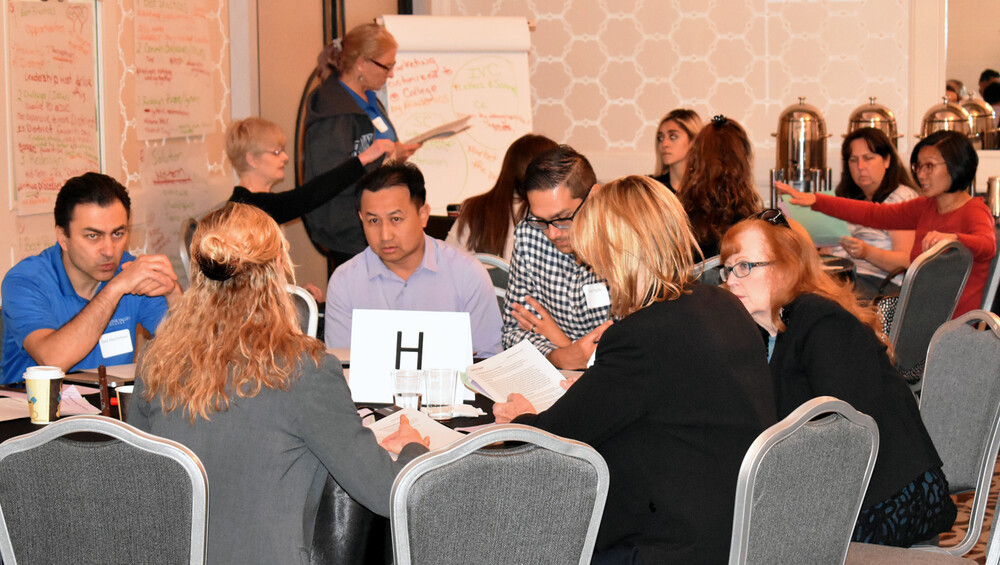
Small group break out sessions
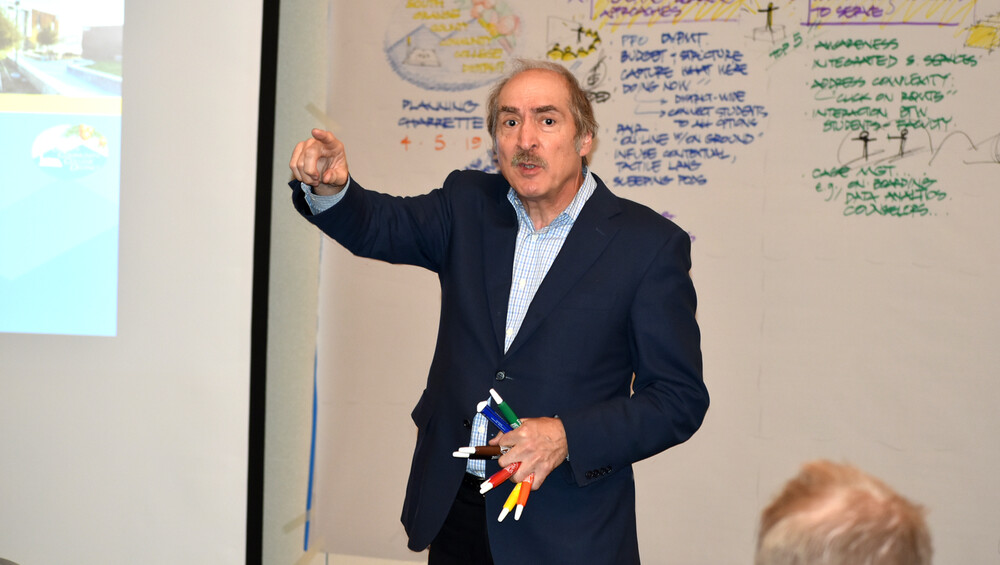
General session discussions
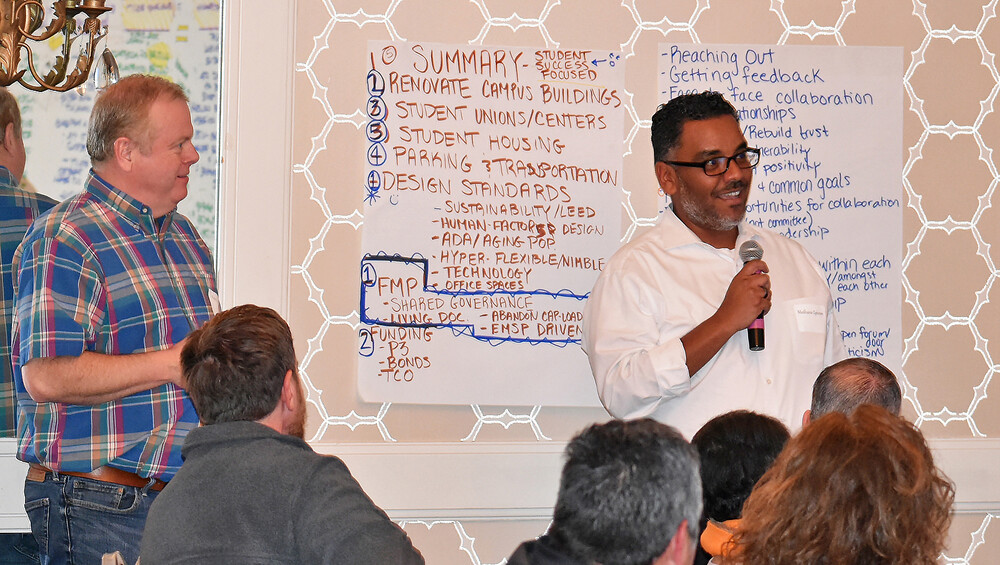
Medhanie Ephrem, Executive Director, Facilities Planning
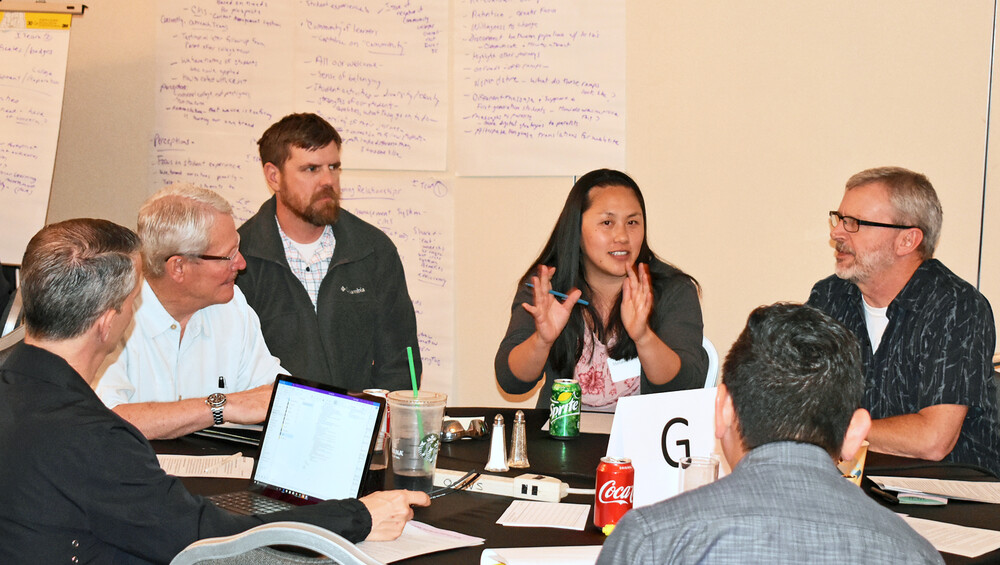
Small group breakout sessions
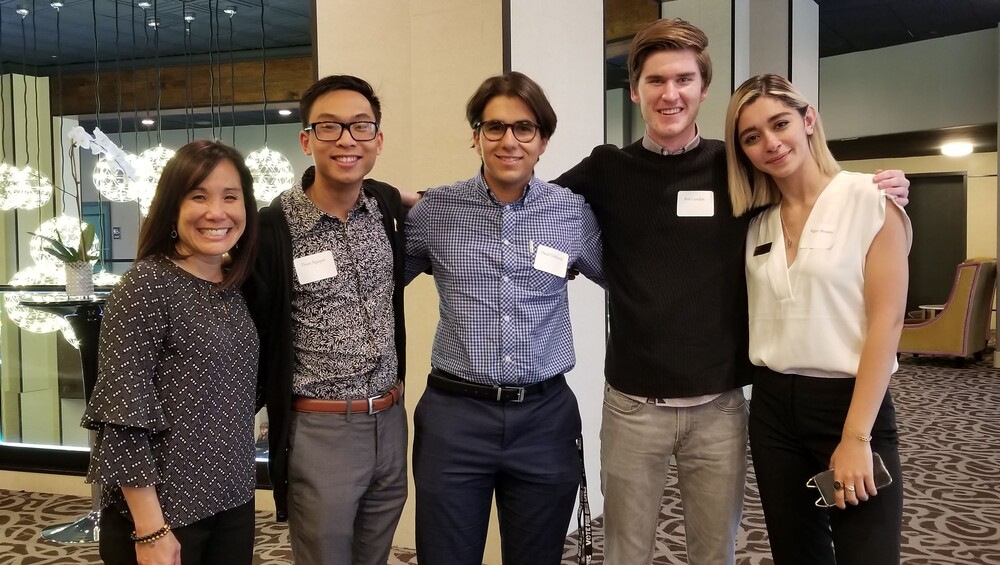
Denice Inciong, the District Director of Research, Planning & Data Management, and student volunteers
The District's planning and decision-making processes emphasize the importance of dialogue during decision-making discussions and the importance of consensus to reach final recommendations. Authentic dialogue occurs when colleagues collaboratively explore complex issues to reach a common understanding of the issues. This process requires that the participants enter discussions as equals, suspending their titles and preconceived ideas to listen to others' viewpoints. Authentic dialogues are successful when colleagues combine their insights and knowledge to develop a broader and collective understanding of the issues, resulting in the group being prepared to develop more meaningful recommendations.
Consensus is a collective opinion characterized by the following five elements:
- Collaboration: Proposals for consideration are constructed with input from all interested group members.
- Inclusion: As many stakeholders as appropriate should be included in the group's discussions.
- Participation: All participants contribute to the discussion.
- Agreement Seeking: The group makes a concerted attempt to reach a full agreement.
- Cooperation: Decisions may incorporate individual concerns but are designed to benefit the whole group. Individual preferences do not override the needs of the whole group.
District-wide committees, councils, and task-forces are encouraged to use the following best practices to reach consensus:
- Clarification of the Issue: At the outset of the discussion, issues are clearly presented.
- Discussion/Dialogue: Participants combine their insights and knowledge to develop a broader and collective understanding of the issues.
- Participation: Committee members accept responsibility for attending meetings, designating a substitute when unable to attend, contributing to the discussion, and following up on action items. Committee chairs are expected to schedule meetings in a way that maximizes participation.
- Consensus: Committee members are asked to utilize consensus to reach a decision. The committee reaches consensus once all members and guests have had an opportunity to contribute to the discussion, and no one feels so strongly against a resolution that their objection must be noted.
- Consensus does not require unanimous approval; however, consensus requires that the group attempts to hear members' perspectives for mutual understanding and find a compromise, if possible. If a group cannot reach a consensus, the differing viewpoints can be forwarded to the next level of decision-making as unresolved.
- Committee Recommendations/Decisions: Once consensus is achieved; all committee members support the decision-making process and the committee's recommendations.
District-wide Planning and Decision-Making Manual
The purpose of the District-wide Planning and Decision-Making Manual is to describe how decisions are made at SOCCCD. It has been developed in order to improve communication and trust across the District. These processes reflect the mechanisms by which the District ensures that there are opportunities for meaningful collaboration and that the voices of all constituent groups are heard.
The manual describes how employees of the District are involved by clearly delineating the roles and responsibilities of all constituent groups as defined by law, regulation, and District policies and procedures. The manual also includes general principles and procedures that promote widespread participation in these governance processes.
District-wide Function Map
The SOCCCD District-wide Function Map was developed to promote and sustain planning and effective decision-making throughout the district.
The Function Map outlines vital components and functions district-wide and describes District Services and the colleges' responsibilities at a high level. The Function Map will be reviewed annually and updated, as necessary. The District-wide Planning Council approved the Function Map in February 2021.
District-wide Committees
The colleges and District Services rely on numerous councils, committees, and task-forces representing all constituent groups to create a structure for widespread participation. The district-wide administration, district services, and college constituent groups participate in district-wide decision-making through a representative model. College administrators are included in all district-level councils. Representatives of the academic senates, classified staff, and representatives of the exclusive bargaining representatives are included on appropriate District councils. The term "district-wide committee" is the term used throughout this document to include all councils, committees, and task forces. A more detailed description of District-wide committees can be found in the District-wide Planning and Decision Making Manual.
District-wide Planning Committees:
Education Master and Strategic Plans Planning Process
- Charette Notes by Theme
- SOCCCD Education Master and Strategic Plans 2018 RFPQ (Request for Qualification & Proposal)
